A wounded SEAL’s shame becomes a salvation. A fired Marine officer says the numbers point to a Corps problem. And an Army veteran’s first novel works well at war.
Here is a roundup of 15 reviews presented in order of reading value and satisfaction. You’ll see books about the heavy cruiser Indianapolis, weapons that can’t weep, the Unknown Soldier’s pallbearers, what it’s like to be shot by the Taliban, surviving capture in Syria, and a Marine veteran’s third thriller. (Prices are from the publishers; you may find better deals online.)
Plus: A heads-up about 26 other new titles.
NONFICTION
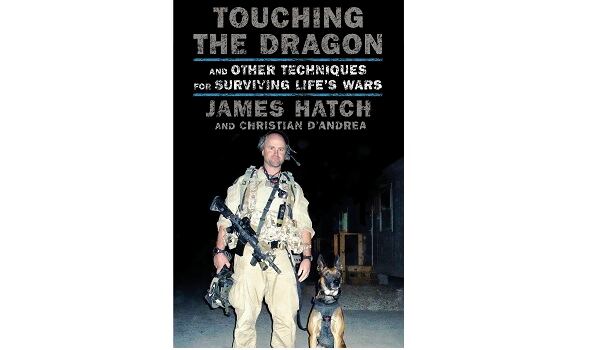
Touching the Dragon: And Other Techniques for Surviving Life’s Wars by James Hatch and Christian D’Andrea, Knopf, 336 pages, $29.
Just when you think you cannot bear to read another memoir by another SEAL, an irresistible one — a book, not a SEAL— surfaces.
The former senior chief and dog handler likes “smashing Stigma” and thinks “rah-rah books about the Navy’s Action Man crews sometimes cheat the reader of something: The dark places, the brokenness.” He dives into both in engaging ways — anecdotal and antidotal —that make you smile and might inspire you.
He decries “the video-game-ification of war.” He and his co-author take you on the real “Speeding Train” of special operations, including a team effort to find the missing soldier Bowe Bergdahl in Afghanistan. (“We were close.”)
He is severely injured, is embarrassed when he screams in pain, and during recovery languishes in a “coffin of condemnation” that is part of his “regimen of feeling sorry for myself.” You’ll get these points on their first mention.
But “shame that stays a secret will kill you,” and he confronts his truth. By using cognitive behavioral therapy, he “keeps at bay” the dragon of discontent that torments him, and he discovers that trauma is universal.
“Life is combat. For most of us.” Including dogs. He’s especially fond of “hair missile” Spike, who dies after “I failed to protect him,” and he founds Spikes K9 Fund. Unfortunately, several pages about the nonprofit’s work interrupt the narrative flow and might work better as an epilogue.
His human heroes include the fellow SEAL he calls Fly Fisherman, a guy who shows “disproportionate commitment” to Hatch’s health, and former Rep. Gabrielle Giffords, D-Ariz.
“I was shot in the leg. Gabby was shot in the head” and is “a machine of positivity and strength. She was the anti-me.”

Fight Like a Girl: The Truth Behind How Female Marines are Trained by Kate Germano with Kelly Kennedy, Prometheus, 288 pages, $18.
The retired lieutenant colonel validates her “wholehearted Marine-ness” and indicts her Corps’ reluctance to make all recruits meet similar standards, mainly because her commanders (Germano names names) “wanted women to serve only in support roles.”
In her role as commander of female training at Parris Island, “I was showing that [women] could” meet Corps expectations in “marksmanship, physical fitness, and leadership” — while the Corps “put together a study to show that they could not. This is why I was fired” in 2015.
RELATED
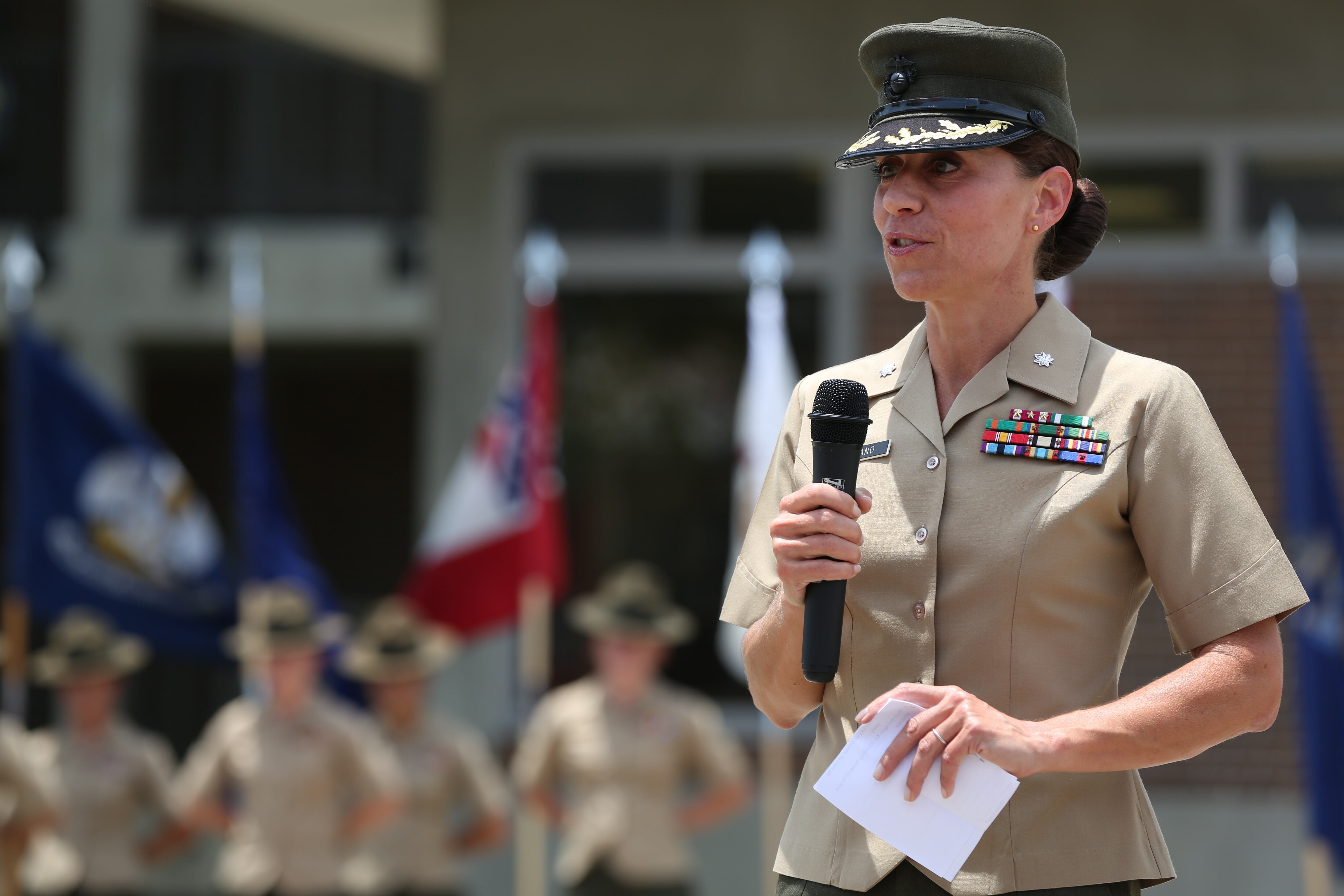
And this is why, in his chapter, husband Joe Plenzler (also a retired Marine lieutenant colonel) says the Corps “started leaking information to the press” — regarding Germano’s dismissal — “in a complete violation of their own release-of-information policies.”
Germano and co-author Kennedy (an Army veteran and former Military Times staffer) bluntly vindicate the career Marine who naively believes that “if the women within my command were strong they would be safe” from sexism — and worse. The numbers are timely and telling during the #MeToo era. Germano says 32,000 male recruits are — separately — trained annually, compared with 3,200 women.
“It is staggering to consider how much talent the Marine Corps misses out on each year.”

Indianapolis: The True Story of the Worst Sea Disaster in U.S. Naval History and the 50-Year Fight to Exonerate an Innocent Man by Lynn Vincent and Sara Vladic, Simon and Schuster, 544 pages, $28 (release date: July 10).
Another history of the sinking in World War II takes a wide berth at launch, describing the heavy cruiser Indianapolis as a “grand but svelte” ship “born from soil as American as the men who sailed her.”
Vincent, the Navy veteran who “collaborated” with Sarah Palin on “Going Rogue,” and Vladic, who directed “USS Indianapolis: The Legacy” (2015) and has been interviewing survivors for two decades, invite you to “roll the film backward” and “watch her rise.”
She does, thanks to less-grandiose descriptions of the sad yet infuriating story.
Men — boys as young as 17 — drift five nights while enduring attacks by sharks and each other. Of the 1,196 souls aboard ship, “three of every four men” die.
There are details about top-secret cargo — uranium for the Enola Gay — and about cowardly admirals “blaming each other in secret while the court-martial of Captain McVay was going in public.” Especially poignant is the fact that Charles McVay kills himself in 1968 but is posthumously exonerated in 2000 — 55 years after the plunge.
The Navy withholds news about the July attack by Japanese torpedoes until V-J Day, when “the joyous news of the Japanese surrender would render the Indianapolis disaster a comparative footnote” to the public … but not to the survivors and, later, journalist Richard Newcomb and other historians.
The book’s “Final Log Entry” is from the Philippine Sea, where a remote video camera shows the wreckage 18,000 feet below the surface in 2017. Watching the evidence, a survivor recounts “holding dying shipmates in his arms in the very same water.”
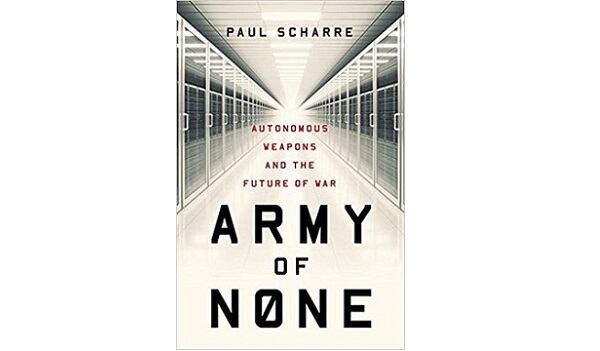
Army of None: Autonomous Weapons and the Future of War by Paul Scharre, Norton, 448 pages, $28.
The defense analyst is “not a technologist” but he could play one on TV, given his reader-friendly and conversational handling of a formidable topic: Smart weapons can’t weep.
From a clever title (remember the “Army of One” slogan?) to the simple diagrams that almost make up for the uninspired jacket art, and for references to “Terminator,” “Jeopardy!” and Disney’s “Fantasia,” his book fulfills its promise: To “guide you on a journey through the rapidly evolving world of next-generation robotic weapons.”
The arms are revolutionary, and “the trend of creeping automation that began with Gatling’s gun will continue.” Scharre carries an M249 squad automatic weapon as a Ranger, leads the group that drafts the Defense Department’s autonomous-weapons policy in 2012, and is a fellow at the Center for New American Security.
He interviews experts in every aspect, including ethics, of the challenges that efficient but irresponsible combat machines introduce. Could someone “leverage commercially available drones to make a do-it-yourself autonomous weapon?” Yes. “I was terrified by what I found.”
You might be scared when you are reminded that even though reputable nations sign rules of engagement (there’s a seven-page table of the status of banned weapons), some non-states — a group such as ISIS, let’s say — are outside those expectations. Disappointingly, the author gives the rogue-state problem little ink.
But there’s other stuff to worry about. “If autonomous weapons are the kind of thing that keep you up at night, militarized advance AI (artificial intelligence) is pure nightmare fuel.”
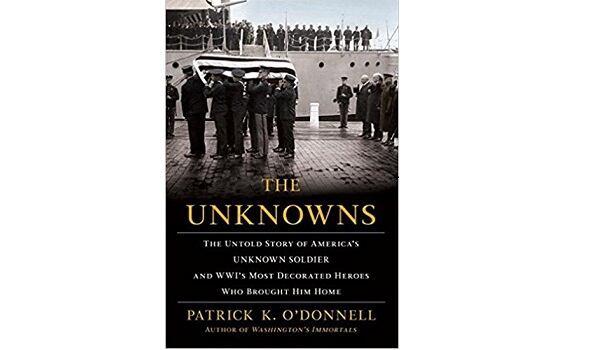
The Unknowns: The Untold Story of America’s Unknown Soldier and WWI’s Most Decorated Heroes Who Brought Him Home by Patrick K. O’Donnell, Atlantic Monthly, 288 pages, $27.
Transpose the billing in the subtitle. The history is mainly about the little-known doughboy Body Bearers for the entombed anonymous soldier.
In telling the combat experiences of the eight men — from the Army (including a Native American), Navy, Marine Corps and Coast Artillery Corps — the historian recaps the war (much of which is not exactly unknown), including “hideous losses” at Belleau Wood. His research is a respectful recognition of the lives and sacrifices of the bearers, including two Medal of Honor recipients, selected by Army Gen. John J. Pershing for duty at Arlington Cemetery in 1921.
O’Donnell’s effort is exemplary except for repeated references, four pages apart, to 128 American deaths among the sinking of the Lusitania … and its “12,000” dead. (Google it.) Try to overlook the editing glitch and dwell instead on the battlegrounds. There you’ll see the hell below what the author terms “America’s greatest memorial.”

Beyond the Beach: The Allied War Against France by Stephen A. Bourque, Naval Institute, 376 pages $35.
Collateral damage from aerial bombing is not just a contemporary matter and not always acknowledged.
A sympathetic Army veteran surveys the devastation of German-occupied France during World War II and says that “its scale, nature and effects are almost unknown in the English-speaking world.”
Official reports do not always reflect reality. One example is the destruction of Nantes, which “receives only a passing comment, with no details, in the Air Force’s official history of the conflict.”
Early in 1944, “if you lived near a French rail yard or factory, near a harbor or along the coast in Pas-de-Calais, you lived under the constant threat of Allied bombardment” as the “Royal Air Force Bomber Command and the U.S. Army Strategic Air Forces dropped more bombs on occupied France than on Germany.”
Bourque says “civilian deaths were part of the human sacrifice that contributed to the Allied victory on June 6.”

Blindsided by the Taliban: A Journalist’s Story of War, Trauma, Love and Loss by Carmen Gentile, Skyhorse, 240 pages, $25.
An intrepid freelancer bares his aspirations and asininities in his memoir, in which self-deprecation and self-indulgence are peppered with ribaldry.
War in eastern Afghanistan is “one long slog through the mountains after another, up and down, day after day” — until he shoots video near Combat Outpost Pirtle-King and turns to find what his subjects are looking at: A rocket’s green glare “screaming right for me,” hitting “me square in the face.”
But he sees the bright side. “This little incident is just the kick in the ass I need to quit smoking cigarettes,” and besides, “I’ll just rock an eye patch.”
Instead, recovery’s “perpetual negation,” including unsurprisingly unlucky female relationships, perpetuate his “ability to recognize my problem and a penchant for ignoring that recognition.”
An assignment takes him back to scene of the blinding launch on his third return visit to the mountains, where he finds that reporting is rehabilitating. “Oddly, only in Afghanistan am I able to really laugh again.”
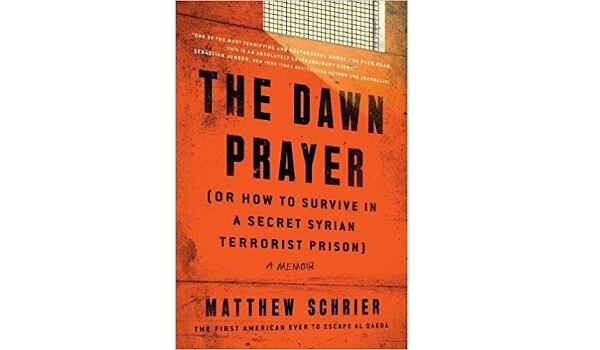
The Dawn Prayer (Or How to Survive in a Secret Syrian Terrorist Prison): A Memoir by Matthew Schrier, BenBella, 312 pages, $25.
Al-Qaida’s branch in Syria, al-Nusra Front, holds the freelance photojournalist captive for seven months in 2013. This is a blow-by-blow of isolation, starvation, filth, bugs and other torture forms.
That the book is a not an obituary written by somebody else is testament to the writer’s savvy and mettle toward his captors and toward his roommate assignment, a fellow but ugly American.
You are there, but you must endure near-deprivation of context — about the terrorists or the territory, about whether editors care that he is not transmitting photographs, about whether his feeling “betrayed by the FBI’s handling of my case” is justified. How does the FBI typically handle such cases?
A cover blurb calls this “one of the most terrifying and suspenseful books I’ve ever read,” a comment that makes your reviewer think the blurb-er read a different book. The jacket also says “Matthew has devoted himself to working with the US Military” to “educate American troops about survival after capture by extremists.” Pray the training does not include force-reading.
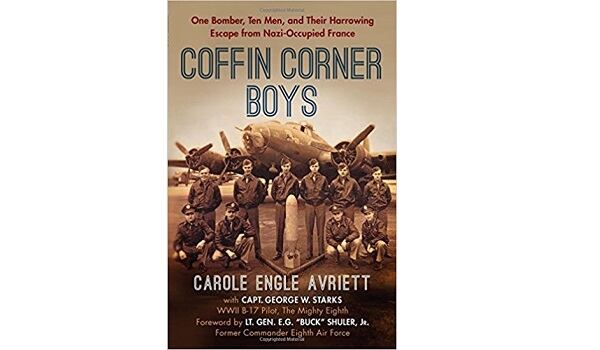
Coffin Corner Boys: One Bomber, Ten Men, and Their Incredible Escape from Nazi Occupied France by Carole Engle Avriett with Capt. George W. Starks, Regnery, 360 pages, $29.
Their B-17’s vulnerable formation spot is called the coffin corner because “you were most likely to have your ass shot down from there” — and when their plane is shot during its first mission, the men jump. Thanks to French citizens, some men arduously and dangerously get out. No thanks to the Germans, two get sent to a prisoner-of-war camp.
Based on interviews with pilot Starks and families of other crew members, the book employs an oral-history format that mostly allows the men of the 92nd Bomb Group of the 8th Air Force to speak in first person, a form that provides tone in otherwise ordinary writing, similar to the next book.
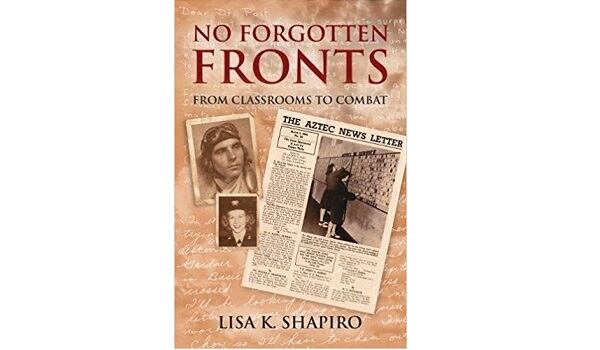
No Forgotten Fronts: From Classrooms to Combat by Lisa K. Shapiro, Naval Institute, 392 pages, $30.
A professor wants San Diego State College (now University) friends to stay in touch while they’re overseas during World War II. However, in 1942, a Facebook group is not an option.
Instead, Dr. Lauren Post asks students to send mail. They do, and monthly he prints their correspondence. Within two years The Aztec News Letter reaches “800 men overseas,” 2,000 service members in the U.S. and 500 students on campus. By war’s end, the Post office collects 4,500 letters.
Readers then and now relive the routine and the wrenching: A pilot in North Africa in 1943 hopes “this war will wipe out racial and political boundaries, uniting the world in an intelligent peace,” and two months later the lieutenant who sang in “The Desert Song” on campus dies.
This is a collection of excerpts from those published excerpts. “The simple, beautiful, profound prose” conveys “for me the meaning of war,” Shapiro writes, and she is correct. Did other schools produce similar publications? She doesn’t say.
SELF-HELP
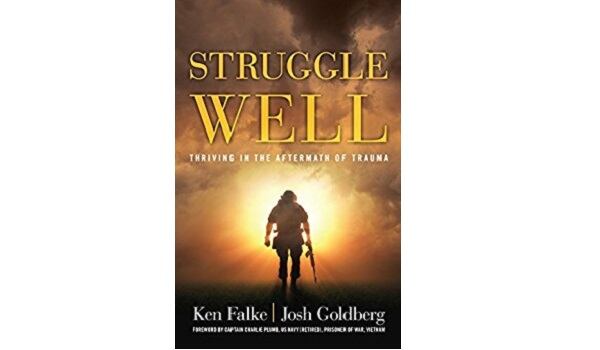
Struggle Well: Thriving in the Aftermath of Trauma by Ken Falke and Josh Goldberg, Lioncrest, 217 pages, $16.
Navy veteran Falke and civilian Goldberg personally deal with the subject, and their book is a framework of their efforts at the nonprofit Boulder Crest Institute, which Falke founded.
“Everyone struggles, and everyone can learn to struggle well.” If their suggestion sounds like a contradiction, recall Samuel Beckett’s admonition to “fail better” next time.
“We’re not mental health experts,” the pair says, but “we’ve seen through our work the transformative success of what a program like ours does for somebody” — in their count, “thousands” of participants.
They write affirmatively about spiritual wellness that “is not religious” and strives for balance, about how to turn stress into strength — with tips that might be useful even if you never visit the Virginia or Arizona facilities.
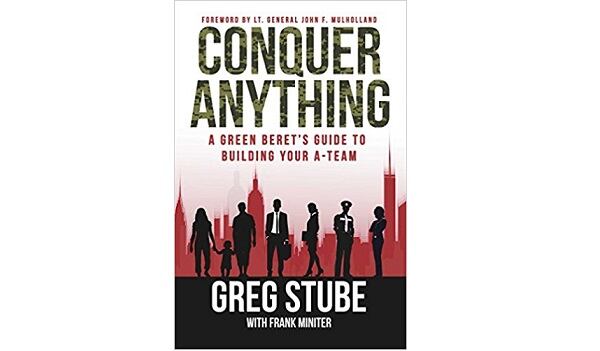
Conquer Anything: A Green Beret’s Guide to Building Your A-Team by Greg Stube with Frank Miniter, Post Hill Press, 208 pages, $26.
The former Army Special Forces medical sergeant (“only a certain kind of dude will be a pecker checker”) later “the Green Beret’s [sic] first official spokesperson” veers into memoir and management: “The secret to execution is defining and assigning actionable goals to the right people.”
He cites Citizens United’s fighting “the campaign-finance restrictions that muzzled their free speech near elections,” philosopher Ayn Rand, then-Texas Gov. Rick Perry, musician Pharrell (“Happy”) Williams, and there’s a blurb from National Rifle Association president Oliver North, a former Marine.
The 23-year soldier says that until he was injured in Afghanistan, “the warrior persona” defined him. Now, “I want men to embrace the feminine virtues that have made their lives whole and which have been the centerpiece of our culture.” After all, “a mother makes a place a home.”
A father can too, some might add.
FICTION

Cherry by Nico Walker, Knopf, 336 pages, $27 (Aug. 14 release date).
The debut novel by an Army medic and veteran of “more than 250 missions” in Iraq might be the year’s only prominent fiction by an author serving “an 11-year sentence for bank robbery.”
His status, noted by the publisher, will likely intrigue some reviewers and readers. Publisher’s Weekly terms the work a “fictionalized account of the author’s exceptional life.”
Yet the civilian life of the author’s unnamed narrator ends is routine: Day after day of drugs and sex and robbing banks for money to buy more drugs and more time for more sex. Paraphrasing George Bernard Shaw, the protagonist wonders “if youth wasn’t wasted on me,” and he leaves little doubt.
Adulthood is no better. At 25, he doesn’t “understand what it is that people do. It’s as if all this were built on nothing,” on indifference, including “enlisting in the Army because I’d been saying I would.”
In the military, everything is “all make-believe” and “the drill sergeants were just pretending to be drill sergeants. We were pretending to be soldiers. The Army was pretending to be the Army.”
Active duty means having to listen to “the Toby Keith song” at Army ceremonies and in bars and having to endure PT. “Most of us could do push-ups. And were the outcomes of all the wars decided by push-ups and idle talk, America might never lose.” Fort Hood is “bleak, a new kind of desert, engineered to induce fatalism in the young. It worked like a charm.”
His advice? “Don’t ever join.”
However, war is where the novel works best. Combat compels the soldier opportunity to stand up for something, finally, to interact with passion. He talks a lieutenant out of a disastrous decision potentially affecting his brothers, who are “just the help, glorified scarecrows; just there to look busy, up the road and down the road, expensive as f[--k], dumber than shit.”
The latter expletive in that sentence is the narrator’s go-to word: Dumber than it. Somebody isn’t it. “I’m not trying to start any” of it. Talking “s---” about whatever. These examples are from one page, and other pages are full of it. His vocabulary limit, perhaps induced by there being “nothing better than to be young and on heroin,” becomes a listless list, and that’s a challenge for a reader and an author. Inner euphoria does not translate into outer eloquence or character development.
Still, “Cherry” is worth picking up, an imaginative work that shows Walker’s potential to ripen.
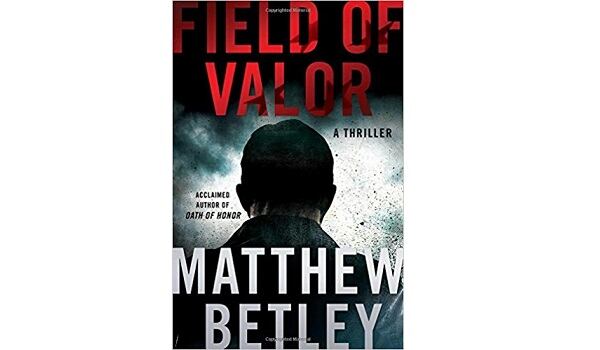
Field of Valor: A Thriller by Matthew Betley, Bestler, 400 pages, $26.
The mission continues for former Force Reconnaissance Marine Logan West.
This time he performs “reckless brave acts of heroism” with his newly organized team of four, including a strong female. (Let’s hope she is being groomed to star in her own thriller in a genre full of manly men).
The commander in chief asks Team West to “put a stop to the mess” created by insurgents inside a global, corporate-backed entity that rules the world from under the conference table. (The premise is a staple in current mili-thrillers.)
What if the courageous quartet needs to break a law or two in the process of saving in America? No problem. The president already signed pardons for any potential crimes — an offer that seems like today’s news.
Betley knows the thriller formula, and the situations from Quantico to the Smithsonian Air and Space Museum’s suburban branch are exciting, and occasionally wry.
A TV station’s helicopter hovers to cover an attack on a highway, and on the ground a Secret Service agent discovers that the aircraft actually contains bad guys in journalists’ clothing.
“It’s a fake news helicopter,” he ascertains. The line is worth the price of the book.

Permanent Change of Station by Lisa Stice, Middle West, 96 pages, $12.
Mary Cassatt’s 1878 painting of a girl and dog and the Marines’ 2017 photograph of a Humvee in “the Middle East” share the cover and the author’s mind in the second collection by a Marine spouse and mother.
Her everyday epiphanies are about parenthood, pets and perseverance “while Daddy patrols/someone else’s night.” The titular poem asks why assignments are called “permanent” when they are not. Stice concedes that any move makes us “permanently changed.”
Readers of Sun Tzu, Shel Silverstein and others might see how the pieces borrow (and credit) their words. And some of the 60 short observations go to the dogs. Honest.
Here’s the 11-word “New Trick”: “Wave bye-bye./The dog raises a shaky paw/receives a treat.”
RELATED

NOTED, NOT REVIEWED: FICTION
Anatomy of a Miracle: The True Story of a Paralyzed Veteran, a Mississippi Convenience Store, a Vatican Investigation, and the Spectacular Perils of Grace by Jonathan Miles, Hogarth, 368 pages, $27.
- Fake nuance: An Army veteran who is disabled in Afghanistan gets out of his wheelchair — in a novel that is not a “true” story.
Reaper: Ghost Target — A Sniper Novel by Nicholas Irving with A.J. Tata, St. Martin’s, 336 pages, $27.
- Former Ranger and memoirist (“The Reaper,” “The Way of the Reaper”) Irving, nickname “Reaper,” sticks to his word. “Reaper” Harwood stars in this thriller written with former general and thrillerist Tata.
The Secret to Southern Charm by Kristy Woodson Harvey, Gallery, 400 pages, $16.
- In the second Peachtree Bluff Series novel, a mother goes on after her Army husband is declared missing. The author credits the aforementioned, busy Tata for “talking me through some of the finer points of military life.”
Tom Clancy’s Op-Center for Honor by Jeff Rovin, St. Martin’s, 352 pages, $17.
- The deceased novelist’s imitable style lives on in this thriller about Cold War missiles resurfacing in Russia, part of a series “created by Tom Clancy and Steve Pieczenik” but written by a — not in — third person.
The Moscow Offensive by Dale Brown, Morrow, 448 pages, $29.
- Russians infiltrate the U.S. of an “inept” female commander in chief. Enter the Iron Wolf Squadron and its Cybernetic Infantry Devices — “12-foot-tall humanoid combat robots.” A thriller by a former Air Force captain.
Boston Burning by Eric D. Salin, Amazon Digital, 370 pages, $3.
- The Vietnam-veteran Marine and university professor pits an international terrorist against an Army veteran in an FBI counterterrorism unit; “neither will follow the rules” in this cheap thriller.
Civil War Two by Randall Collins, Maren Ink, two volumes, 412 pages and 326 pages, $16 each.
- The subtitle of the two-part novel is “America Elects a President Determined to Restore Religion to Public Life, and The Nation Splits.” There’s a war between religious and secular states. Avoid the conflict.
Check Canopy by Jack Welsh, Outskirts, 158 pages, $14.
- In this autobiographical novel, a retired Army colonel with a transplanted kidney recounts the career of Frank, an Army colonel with kidney disease. The lesson: After you jump, check your canopy.
NOTED, NOT REVIEWED: NONFICTION
Facts and Fears: Hard Truths from a Life in Intelligence by James R. Clapper with Trey Brown, Viking, 432 pages, $30.
- The Obama-era National Intelligence director — earlier he went from Marine reservist to Air Force lieutenant general — and his former speechwriter offer a look at his career and at collusion. … Uh, the Russians are coming.
The Assault on Intelligence: American National Security in an Age of Lies by Michael V. Hayden, Penguin, 304 pages, $28.
- Uh, they’re already here: The former four-star Air Force general, CIA head and National Security Agency director offers his perspective on what and who — including a commander in chief — threatens national security.
Strategy Strikes Back: How ‘Star Wars’ Explains Modern Military Conflict edited by Max Brooks, John Amble, ML Cavanaugh and Jaym Gates, Potomac, 272 pages, $30.
- Combine a witty title and jacket typography with 30 “top military and strategic experts” and you’ll find a galaxy of analyses about the “balance, care and empathy to achieve the strategic advantage we need.”
RELATED
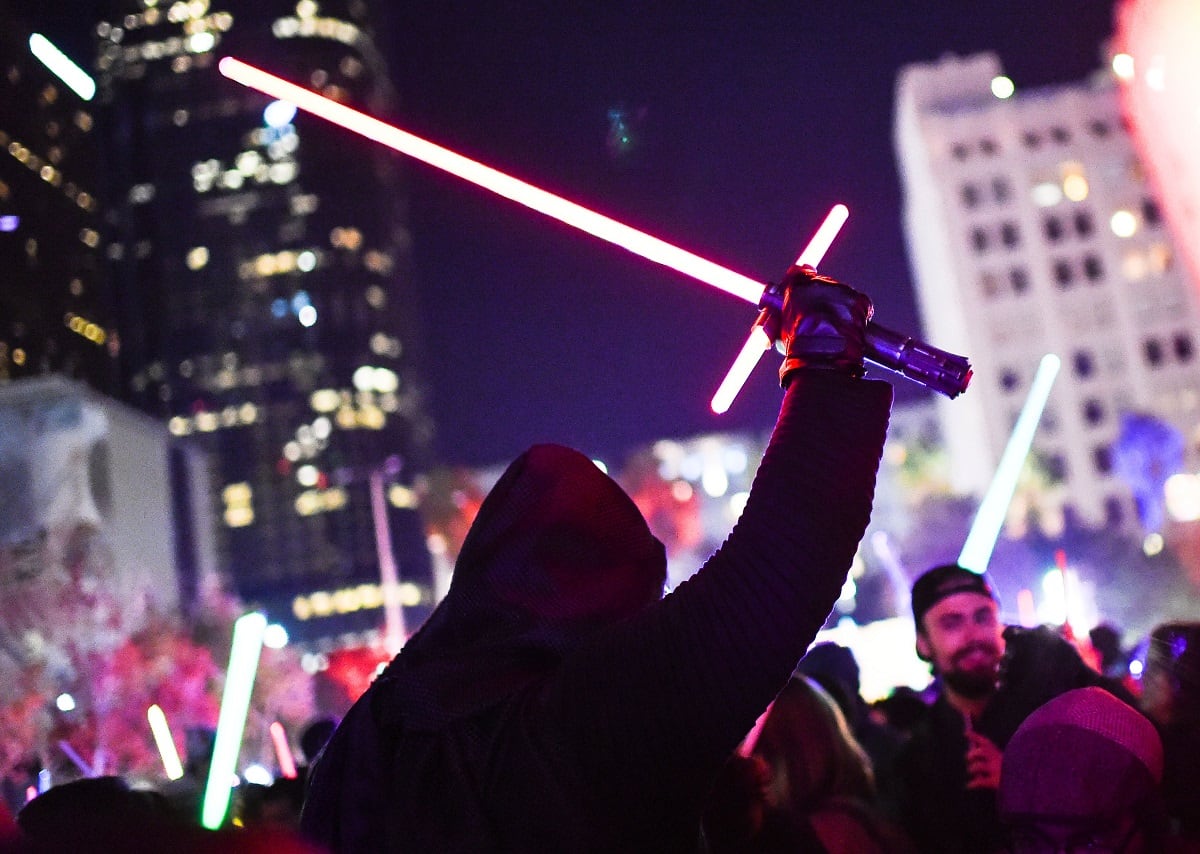
You’ll Never Walk by Andy Grant with Phil Reade, deCoubertin, 308 pages, $20.
- His tattoo says “You’ll never walk alone.” Until Afghanistan, when the Royal Marine loses a leg rather than hobble on it. Surgery severs the word “alone” — but Grant becomes “the fastest one-legged man in the world.”
Global Security Cultures by Mary Kaldor, Polity, 224 pages, $23.
- The London professor asks why “politicians think that war is the answer to terror when military intervention in Iraq, Afghanistan, Pakistan, Syria, Mali, Somalia and elsewhere has made things worse? Good question.
On War and Writing by Samuel Hynes, Chicago, 224 pages, $22.
- A Princeton literature professor who was a Marine pilot in World War II collects his essays and reviews about the way veterans and civilians express their feelings about war.
Women at War: Subhas Chandra Bose and the Rani of Jhansi Regiment by Vera Hildebrand, Naval Institute, 344 pages, $30.
- Survivors of a female regiment considered a “radical military innovation” in 1943 describe combat against British rule in India.
1918: Winning the War, Losing the War edited by Matthias Strohn, Osprey, 304 pages, $28.
- “Some of the best historians from around the world,” including three Americans (two former Army officers), analyze the main players’ last year in the conflict.
Hadrian’s Wall by Adrian Goldworthy, Basic, 192 pages, $25.
- A professor from Wales takes some of the mystery out of the great wall in this study of the people who utilized the barrier, “a place where barbarism began.” Or ended, maybe.
Cashing In on Cyberpower: How Interdependent Actors Seek Economic Outcomes in Digital World by Mark T. Peters II, Potomac, 280 pages, $42.
- How leaders use cyber tools influentially, according to an Air Force intelligence officer.
The War Against the Vets: The World War I Bonus Army During the Great Depression by Jerome Tuccille, Potomac, 264 pages, $33.
- In “one of the sorriest chapters in American history,” veterans — called “protestors” when “protesters” is correct — demonstrate for a benefit detractors say is a “giveaway” the country cannot afford.
Sgt. Rodney M. Davis: The Making of a Hero by John D. Hollis, Hugo House, 218 pages, $18.
- A nephew-in-law eulogizes the Medal of Honor recipient’s bravery in segregated Georgia and in Vietnam, where the African-American Marine saves his comrades by smothering a grenade in 1967.
Bloody Sixteen: The USS Oriskany and Air Wing 16 During the Vietnam War by Peter Fey, Potomac, 440 pages, $33.
- The aircraft carrier’s three deployments in “the most dangerous phases of Operation Rolling Thunder” — from a retired Navy commander.
A Tiger Among Us: A Story of Valor in Vietnam’s Shau Valley by Bennie G. Adkins and Katie Lamar Jackson, DaCapo, 224 pages, $27.
- Forty-eight years after his 1966 bravery, the retired Army command sergeant major receives a Medal of Honor. In this memoir, he grows up in Oklahoma and grows courage in combat.
NOTED, NOT REVIEWED: MORE SELF-HELP
Out of Uniform: Your Guide to a Successful Military-to-Civilian Career Transition by Tom Wolfe, Potomac, 296 pages, $25.
- The second edition of coaching tips from a Naval Academy graduate and “expert in the field.”
Victory: Seven Revolutionary Strategies for Entrepreneurs to Launch Your Business, Elevate Your Impact and Transform Your Life by Larry Broughton, Bandera, 236 pages, $20.
- The former Army staff sergeant, now CEO of his eponymous hotels, has a new version of his 2011 book.
Taking Back Your Life: Transition from Military to Civilian Life by Thomas E. Whittingslow, CreateSpace, 150 pages, $13.
- The former Marine and soldier, an octogenarian, interviews veterans and he offers guidance with help from a clinical social worker.
The Momentum of Hope: Personal Stories of Moral Injury by Volunteers of America, 196 pages, $25.
- A dozen military veterans are among 30 people who share their experiences and consciences in this collection of essays produced by the faith-based nonprofit.





